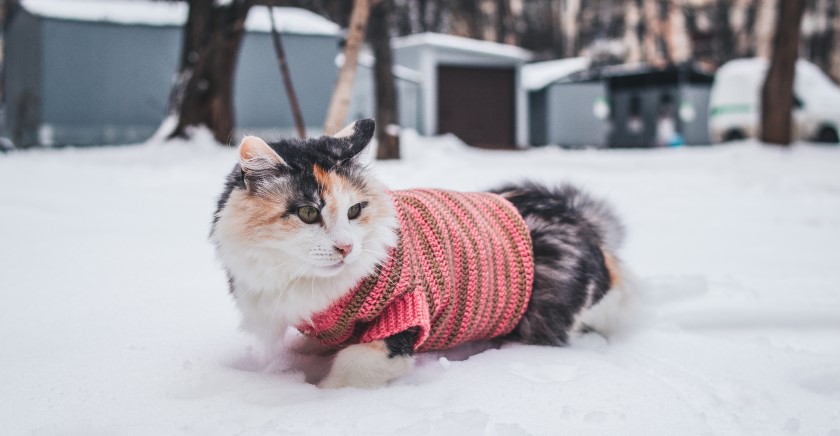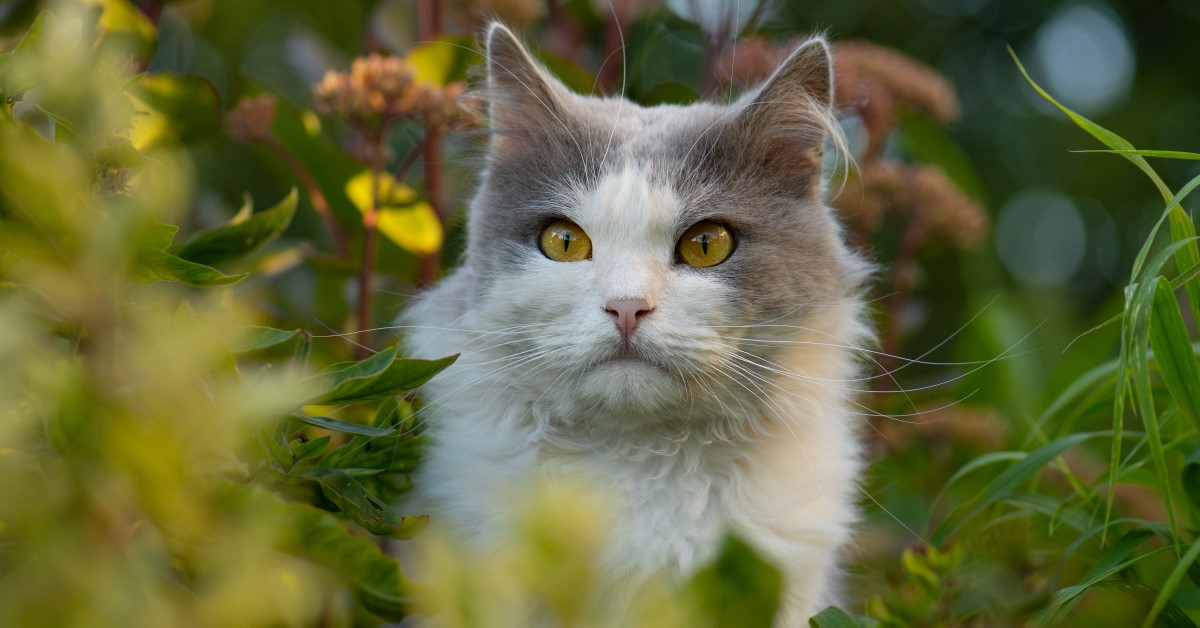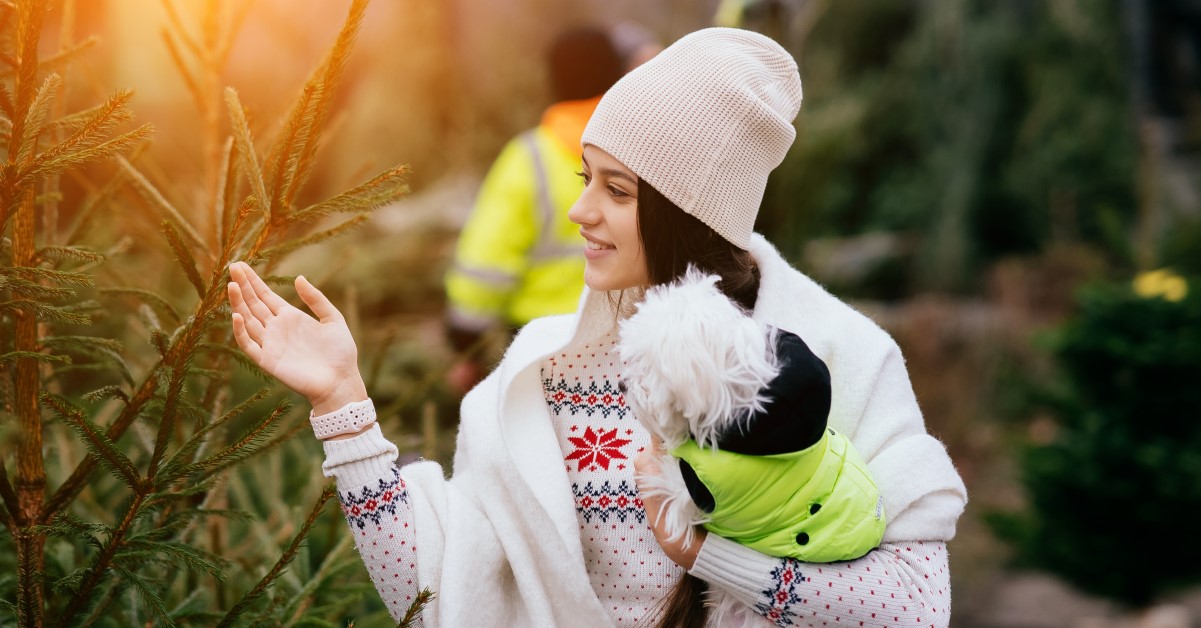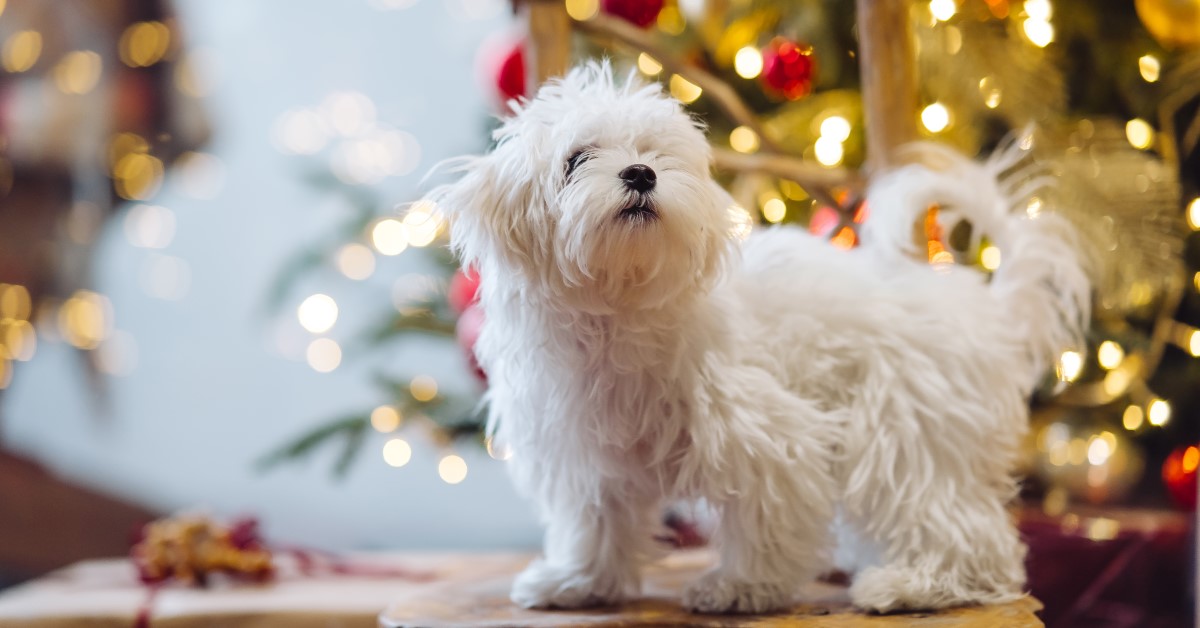Cold Weather Safety Tips For Your Pet
We need to prepare our pets for the seasonal changes too!

It'll soon be getting cold outside! As summer begins to give way to cooler temperatures, preparing for winter's arrival in full force, we all prepare our homes, cars and selves to stay warm for the anticipated low temperatures. We should also be preparing our pets for the cooler temperatures and seasonal changes.
We tend to think of our pets as hardy creatures, able to handle cold, water, snow and the like without any health problems. After all, they were once "wild animals", right? Well, we used to live in caves as well, but you don't see us spending time out in the elements without proper protection and preparation; the same goes for our pets. Just because they are animals, it does not mean they can automatically handle the winter weather, especially when it becomes extremely cold.
The following guidelines will help you protect your animal companions when the mercury drops:
FOR CATS
1.
Keep your cat indoors. Outside, felines can freeze quickly, become
disoriented, lost or even injured and too weak to make it back home, even if
they know the way.
2.
During the winter, outdoor cats sometimes sleep under the hoods of
cars. When the motor starts, the fan belt can injure or kill the cat. If
there are outdoor cats in your area, bang loudly on the car hood before
starting the engine to give the cat a chance to escape.
3.
When you bathe your cat in the colder months, be sure that it is completely
dry before allowing it to go outdoors. It's best to
wait 24-hours to make sure its fur has dried right down to the skin.
FOR DOGS
1.
If you keep a dog outside, you need to do some research. Not all
puppies are able to handle the cold weather. Research your breed or ask your
veterinarian about how you should care for your puppy during the winter
months.
2.
Even if your puppy can handle staying outside in the cold, you should
take some basic steps to make things comfortable for it. You must protect
your dog with a dry, draft-free doghouse that is large enough to allow the
dog to sit and lie down comfortably, but small enough to hold in its body heat.
Make sure to turn the doghouse so that the opening in the front is not facing
the predominant wind. The wind can drop temperatures quickly and
significantly, so help your puppy out.
Try to keep the doghouse raised slightly off the ground to avoid problems
with flooding rainwater and cold ground. Cover the floor with cedar shavings
or straw, and cover the doorway with waterproof burlap or heavy plastic. It's also a good idea to put a blanket inside so your
puppy has something to sit on that isn’t as cold as the floor.
3.
Keeping puppies active is another key to helping them through the
winter. We all tend to become less active during the winter, but your dog
needs to stay in shape regardless of the temperatures outside. Throw a ball
around the yard to give your dog exercise. If it is too cold, bring the puppy
indoors and play inside the home or garage. A dog in good physical condition
is a dog in good health.
4.
Never let your dog off the leash on snow or ice, especially during a
snowstorm—dogs can lose their scent and easily become lost. More dogs
are lost during the winter than during any other season, so make sure your
pet always wears ID tags.
5.
If you own a shorthaired breed, consider getting it a coat or sweater
with a high collar or turtleneck with coverage from the base of the tail to
the belly. For many smaller shorthaired dogs, this should be regulation
winter wear.
6.
Puppies do not tolerate the cold as well as adult dogs, and it may be
difficult to housebreak during the winter. If your puppy appears to be
sensitive to the weather, you may opt to paper-train it inside. If your dog
is sensitive to the cold due to age, illness or breed type, take it outdoors
only to relieve itself.
7.
Does your dog spend a lot of time engaged in outdoor activities?
Increase its supply of food, particularly protein, to keep your dog and its
fur in top shape. Outdoor activity in colder temperatures burns more energy
in a shorter time period, so increasing food will help provide additional
energy.
8.
Make sure your animal companion has a warm place to sleep, specifically
off the floor and away from all drafts. A cozy dog or cat bed with a warm
blanket or pillow is perfect.
9.
Doggy boots are not just a novelty for pampered pets. Even paws
covered in heavy fur get cold when they get wet. Exposure to ice, snow and
salt can hurt even the toughest paws. Well-made boots can keep a dog's paws
warm and dry in rain, ice, and snow, and protect them from the harmful effects
of salt and chemical deicers.
10. If your pet spends time on a porch or other enclosed areas
affected by extreme temperature, routinely check your pet's water dish to
make certain the water is fresh and unfrozen. Use plastic food and water
bowls rather than metal. When the temperature is low, your pet's tongue can
stick and freeze to metal.
GOOD SENSE TIPS:
Never leave your dog or cat alone in a car during cold weather. A car can act as a refrigerator in the winter, holding in the cold and causing the animal to freeze to death.
Antifreeze is a lethal poison for dogs and cats. Thoroughly clean up any spills from your vehicle that may be on the
floor of your garage or on the driveway or ground. Consider using products
that contain propylene glycol rather than ethylene glycol. Visit the
Just as we have learned how to take precautions to stay warm, and prevent and treat colds and flu, you need to apply similar care to ensure the comfort and health of our pets, too.
Thoroughly wipe off your cat or dog's legs and stomach when they come in out of the sleet, snow or ice. They can ingest salt, antifreeze or other potentially dangerous chemicals while licking paws or fur. Your dog's paw pads may also bleed from snow or encrusted ice, so make sure you check them immediately once it comes back indoors, and clear them of all debris.
PROTECT MY SKIN
When the bite of winter kicks in, many animals get dry skin. A few simple steps can help prevent and treat this condition:
- Never shave your dog down to the skin in
winter, as a longer coat will provide more warmth and water resistance,
even if the fur is naturally short.
- Bathe as seldom as possible. Cats, of course,
wash themselves.
- Brush your dog or cat to remove dead hair and
dander. A healthy fur coat will help keep your pet warm during winter.
- If your pet is small and shorthaired,
it’s likely sensitive to the cold. The
same goes for older animals and those that may be frail or ill. You can't take your pet's temperature by touching its
nose, but you can feel its body to see if it’s shivering. Shivering
means you may need to help your pet keep warm, either by slightly
adjusting the thermostat or using sweaters and capes designed for small
animals, especially if you live in an extremely cold climate where it doesn't really feel warm indoors because it is so
cold outside.
Larger, longhaired pets can usually tolerate colder weather for a longer
time period, and even though you might bundle up,
your pet has a long, thick coat and is set for long winter walks. Just pay
attention to walking over ice and snow; paws do get cold and sharp objects
may be hiding under the powder.
- After a jaunt in the snow or splashing in
puddles, be sure to dry your pet with towels or a hair dryer. Although
they may shake excess water from their fur, they may still be damp.
Ready to start saving money on pet wellness care?
Then take a look at Mint Wellness, the pet wellness plan that provides fast reimbursement on routine pet care. Save on vaccinations, wellness exams, preventatives, dental, and more!
Learn More


